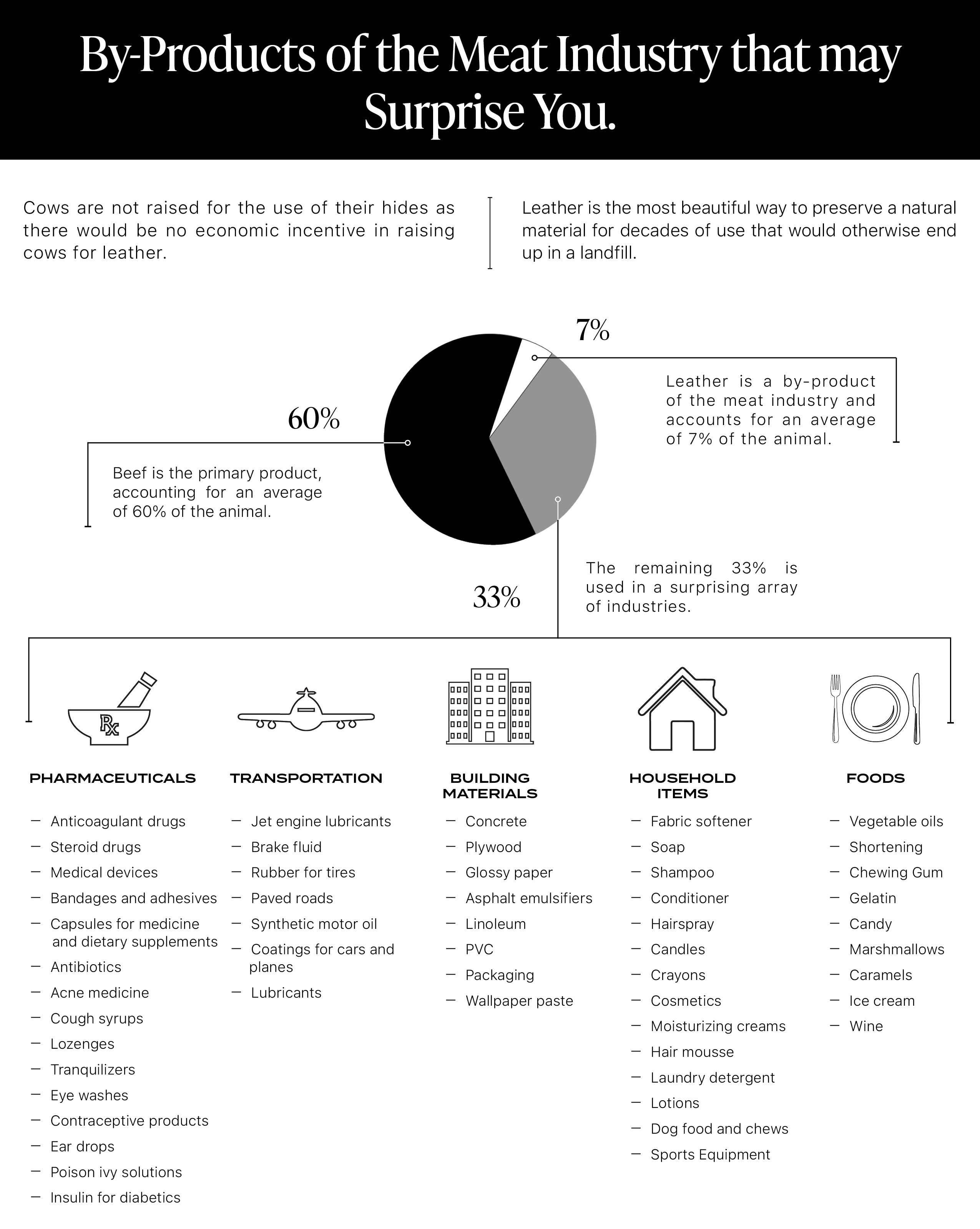By-Products of the Meat Industry That May Surprise You
Our leather is a by-product of the meat industry. Meat production and consumption worldwide is at staggering levels. There are more people to feed and as incomes rise, more people can afford to buy meat.
Farmers do not raise cows to sell the hides. Beef is the primary product, accounting for an average of 60% of the animal. Leather, on the other hand, accounts for an average of just 7% of the animal. What happens to the remaining 33%? Just about all of it is used and in a surprising array of industries.
Some by-products of the meat industry are life-saving, such as insulin for diabetic patients, drugs used during surgery, and many other pharmaceutical products. Below are just a few examples of other industries using these natural by-products.

By-products of the meat industry are used in numerous ways.
What does by-product of the meat industry mean?
According to the Merriam-Webster Dictionary, a by-product is something produced in a usually industrial or biological process in addition to the principal product. Meat by-products are parts other than meat. Leather falls into this category.
A co-product, on the other hand, is something produced jointly with another product. Some people claim that leather is a co-product of the meat industry and not a by-product. However, meat processing and leather production are two separate industries with vastly different manufacturing processes.
Farmers raise cows to provide beef to feed families. Leather tanneries preserve one of the meat by-products that would otherwise end up in a landfill.








